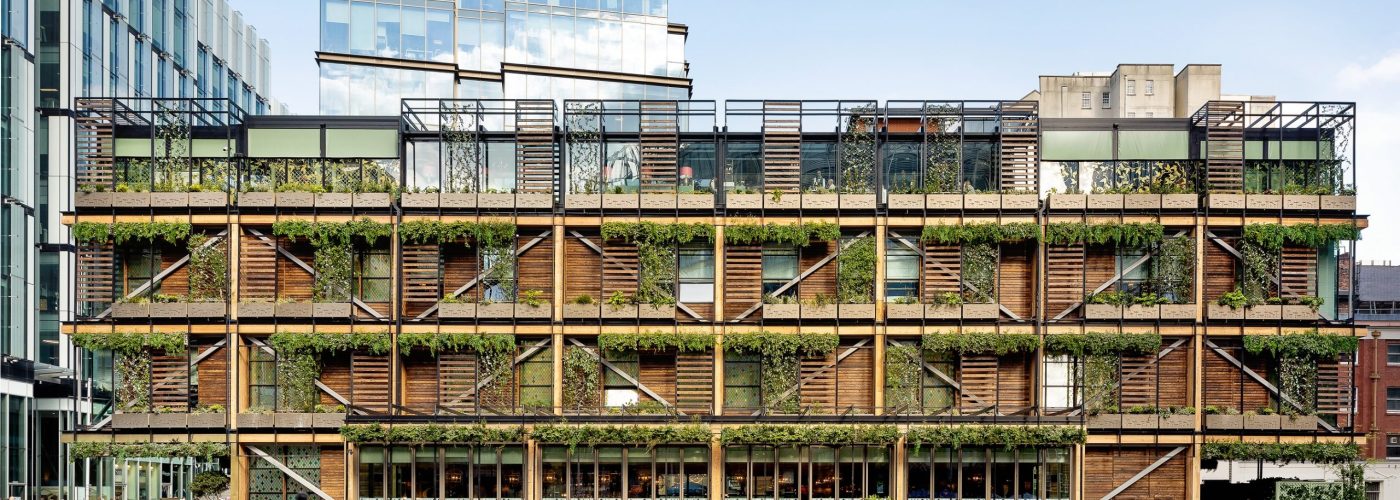Decarbonising construction to produce more sustainable and better performing buildings will be crucial to creating a more viable ecological future. Andy Goodwin, Managing Director of sustainable specialist contractor, B&K Structures considers the pitfalls surrounding a green construction recovery.
It can be done – lockdown provided evidence of just what can be achieved in a few short weeks. But mitigating climate change is no small task however as we start to return to work, it is clear that both a ‘green recovery’ and securing a more resilient economy have been at the forefront of the government’s statements and plans.
The government’s response to climate change has been to set net zero carbon targets by 2050 but if further restrictions come into play, I simply cannot see how this is achievable if we limit the use of our most sustainable, replenishable and natural construction material – timber.
There is a lot resting on the government’s shoulders at present and as we wait for the decision of the MHCLG consultation, the shift in the media mood is tangible. Roger Harrabin reported on BBC News that the government is planning to reduce the maximum height of structural timber buildings from six storeys to four to reduce fire risk. Harrabin rightly pointed out that this action would contradict other advice to increase timber construction because trees lock up climate-heating carbon emissions.
Likewise, under the banner of ‘Do you want beautiful, sustainable and safe tall buildings? Use wood’ – Rowan Moore of the Guardian shared his perspective stating: ‘This is the engineering of timber so that it can act as an alternative to steel and concrete. Its environmental benefits are compelling: whereas concrete is a particularly devastating material, said to account for 4%-8% of the world’s CO2, timber locks up the carbon absorbed by the growth of trees. While construction is a major contributor to greenhouse gases, building in wood has the potential to reduce them.’
Until recently the benefits of carbon sequestration were not widely discussed. But with the growing evidence of global warming and the need for change – sustainability is now back at the top of the construction agenda. Timber creates a natural carbon store through sequestration. For example, cross laminated timber has a net store of 676kg of CO2, /M3. In simple terms the use of timber will have a positive impact on the environment, embodied carbon is therefore pivotal in the fight to reduce our carbon footprint.
We have been advocating this for years, but it appears that potentially banning engineered timber in the external walls of residential sectors above 11m – has created a groundswell of support for timber construction.
It is clear that the UK is out of step with the approach being taken by leading economies in Europe. Even our UK partners are taking a more pragmatic and practical approach. The Scottish building regulations are eminently sensible – building up to 18m in structural timber is permitted when supported by evidence of non-combustible cladding and well-designed fire management systems.
Global concerns to mitigate climate change have prompted some cities and governments to consider the embodied emissions of the materials we use to construct buildings, particularly the sum of all the energy required to extract, process, manufacture, transport, build, and maintain each material. With this consideration in mind, timber is an attractive option since it can achieve less embodied and operational emissions in comparison to concrete and steel. In addition, the prefabrication of timber components with precision can deliver a highly efficient building envelope that improves insulation, saves on heating and cooling and minimises thermal bridging.
In these highly uncertain times, the construction sector needs absolute certainty that there will be no backtracking on the government’s commitment to strengthen Part L of the Building Regulations. We simply must not lose sight of the UK’s ambition to create a low-carbon economy.
About B&K Structures
Through careful design detailing and value engineering, B&K Structures is able to offer the best possible offsite manufactured construction solutions, ensuring a smooth integration for follow-on trades – delivering award-winning, environmentally and sustainable projects on time and to budget.
B&K Structures has worked with some of the UK’s most renowned clients to develop outstanding buildings with sustainable credentials. For more information on their product portfolio and full range of services go to www.bkstructures.co.uk





